New York City, October 1904
Ohio-born John Quinn, 34, a junior partner in a major law firm, has recently moved out of a comfortable boarding house to his own lodgings on West 87th Street.
His apartment is already cluttered with hundreds of his books and paintings he has begun collecting. He is doing well enough in the law practice to employ a valet.
But what Quinn is most excited about is his upcoming three-week vacation to Europe.
Two years ago, he made his first trip to Ireland, to connect with his Irish roots. Quinn quickly was accepted in to a circle of friends including the poet William Butler Yeats, now 39; the playwright Lady Augusta Gregory, 52; the novelist George Moore, also 52; the poet and painter, ‘AE’ [George Russell], 37; the playwright John Millington Synge, 33; and the founder of the Gaelic League, Douglas Hyde, 44. He’s been helping them with the legalities of their American tours, the American copyright of their works, and the Irish theatre company they are establishing.
On this trip, Quinn plans just a short stop in France, some time in England on the way to Ireland and on the way back, and almost two full weeks in Dublin. This will be the third year in a row that he has visited Ireland, and he hopes to continue to make it an annual occasion.
Over at the New York Evening Mail, on Broadway and Fulton Streets, a new columnist from Chicago is settling in. Franklin Pierce Adams, 23, always writing as FPA, has transferred his new wife and his column about a little bit of everything, now called ‘Always in Good Humour,’ to midtown Manhattan.
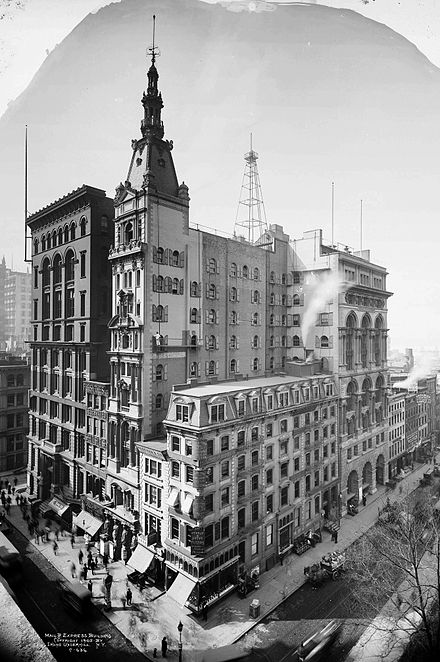
Mail and Express Building, New York City
Up on West 44th Street, the two-year-old Algonquin Hotel has bought the carriage stables next door to expand its residential services. However, the real revenue is from short term guests.
Paris, October 1904
John Quinn is disappointed that he can’t spend more time in France. This morning he managed to see the Chartres cathedral, but he is back in Paris just for the afternoon before leaving for Folkestone.
Two other Americans, siblings Leo, 32, and Gertrude Stein, 30, who moved to 27 rue de Fleurus on the Left Bank the year before, from the Bloomsbury area of London, are enjoying learning about and buying paintings from the dealer Ambroise Vollard, 38. He has managed to get a room full of works by Paul Cezanne, 65, into the second salon d’automne at the Grand Palais. Leo is studying art at Academie Julian, and Gertrude has joined him on his buying trips to Vollard’s gallery on rue Lafitte. They find Cezanne particularly intriguing, but Gertrude is more focused on the writing she is doing late at night.
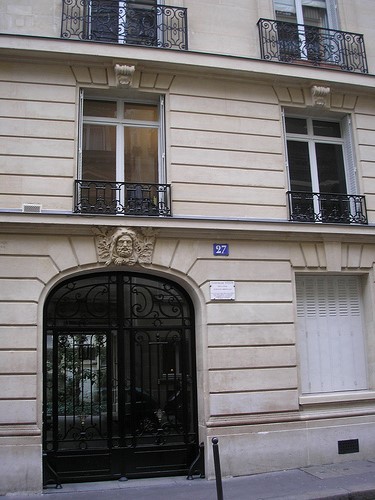
27 rue de Fleurus, Left Bank, Paris
Across town in Montmartre, Spanish painter Pablo Picasso, 23, is settling in to his new studio and his new life with Fernande Olivier, also 23. After several visits, he has decided to make Paris his home, and his dealer Vollard is finding new buyers for his work.
London, October 1904
Arriving late Sunday night, John Quinn checks in to the Carlton Hotel, at the corner of the Haymarket and Pall Mall. He spends the whole day Monday visiting bookstores with a stop at the Leicester Galleries in Leicester Square.
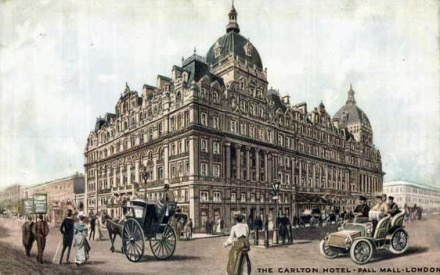
Carlton Hotel, London
Up in the Bohemian Bloomsbury section of London, the move is on. Painter Vanessa Stephen, 25, has shipped her nervous sister Virginia, 22, off to their aunt’s while she moves her and their brothers into a three-story walk up in Gordon Square. Their widowed father, editor of The Dictionary of National Biography, Leslie Stephen, 72, died in February. Vanessa feels liberated.
Her aunts and uncles are scandalized that these young people would live on their own in such a neighbourhood.
Vanessa doesn’t care. This past spring, on their way back from Italy, she and Virginia had visited Paris with friends. They smoked cigarettes and talked about art into the wee hours at the Café de Versailles. That’s what they are going to do now in London, in their own home.
Dublin, October 1904
After a miserable train trip across England to the port of Holyhead—he had paid for first class, but was put in a bunk bed—John Quinn is thrilled to be back in Ireland. He checks in to the Shelbourne Hotel in St. Stephen’s Green at 6:30 Tuesday morning, and finds a welcoming telegram from AE already waiting for him.
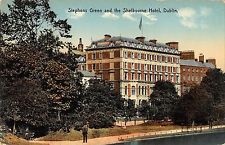
Shelbourne hotel and the Stephen’s Green lake, Dublin
After a much-needed two-hour nap, Quinn is visited by his friend Yeats, and they walk over to the nearby studio of painter John Butler Yeats, 65, the poet’s father. Following a leisurely lunch at the Empire Restaurant, the men are joined by Lady Gregory who has brought fresh food from her western Ireland home, Coole Park, on the train with her. Augusta surprises Quinn by announcing that he is going to be the special guest at a reception with the actors of their young theatre company that evening, in gratitude for his generous donations in the past two years.
The Irish National Theatre Society, with its co-directors Yeats, Gregory and Synge, is becoming more stable. Having premiered Synge’s emotional one-act play, Riders to the Sea, this spring, they are getting ready to move in to their own building on Abbey Street. They should be able to start performing there by Christmas.
In addition to starting a national theatre, Lady Gregory has helped other Irish writers and artists as well. Earlier this year, she sent some money to a young writer AE had recommended, James Joyce, 22, so he could take off for Switzerland with his new love, Nora Barnacle, 20, where he had been offered a job teaching English. Lady Gregory wished him well.
For the next two weeks, Quinn’s holiday in Dublin falls in to a pleasing pattern. Breakfast with Willie and a visit to his father’s studio in the morning, lunches with fascinating writers and artists each afternoon, dinner and late night conversation about theatre with Yeats and Lady Gregory, usually at her rooms in the Nassau Hotel. What a life! This is how he would prefer to spend all his days.
London, November 1904
W B Yeats has come with John Quinn to London for his last week of vacation. Visiting Yeats’ rooms in the Woburn Buildings in Bloomsbury, Willie introduces Quinn into British culture, and the American appreciates the writers and painters he meets.
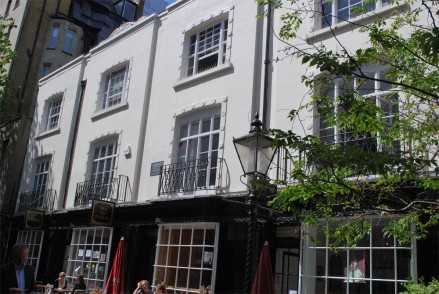
Yeats’ rooms in the Woburn Buildings, Bloomsbury, London
Nearby in Gordon Square, the doctor says Virginia is well enough to visit her brothers and sister in their new home for ten days. Before she goes back to their aunt’s, they have dinner with one of their brother’s Cambridge University friends, Leonard Woolf, 23, who is back home on leave from his government job in Ceylon.
Yeats has one last breakfast with Quinn in the Carlton hotel, and then drives him to Waterloo station to see him off on the boat train to Southampton for the trip home to New York City aboard the St. Paul.
New York City, November 1904
While John Quinn was away, the New York City subway, under construction for the past four years, has finally opened. Theodore Roosevelt, just turned 46, has been elected to a full term as President, having first taken office three years ago when the sitting President William McKinley, aged 58, had been assassinated. With Roosevelt assured in office for four more years, there is a ‘progressive’ feel in the air.
Roger Fry, 37, editor of England’s Burlington magazine, and recently turned down for the post of Professor of Art at the Slade School, has made a special trip to the States to raise money for his magazine. Friends introduce him to J P Morgan, 67, of the board of trustees of the Metropolitan Museum of Art, 5th Avenue at 87th Street, an inveterate collector of art, books, clocks and various objets d’art. Morgan is more impressed with Fry than the Slade School was.
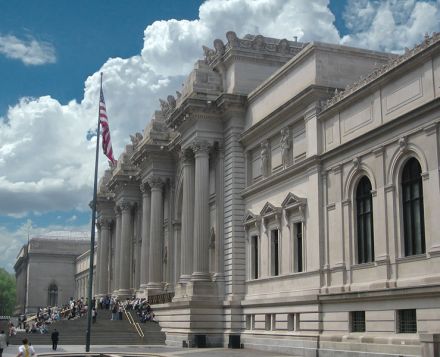
Metropolitan Museum of Art, New York City
Back home, Quinn misses the cultural life of Europe that he has enjoyed for the past three weeks. Now he is back to the old grind of his law practice. His main client, the National Bank of Commerce, has supreme confidence in his abilities. He is working with and meeting important people. There is work to do.
But his heart is with his friends in Ireland…
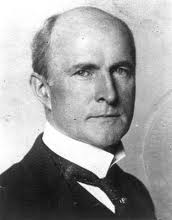
John Quinn (1870-1924)
This year I’ll be piecing together my planned biography of John Quinn. Read more about him on the link to your right: ‘I want to tell you about an amazing man.’
Manager as Muse explores Scribner’s editor Maxwell Perkins’ work with F. Scott Fitzgerald, Ernest Hemingway and Thomas Wolfe and is available on Amazon in both print and Kindle versions.
To walk with me and the ‘Such Friends’ through Bloomsbury, download the Virginia Woolf and the Bloomsbury Group audio walking tour from VoiceMap.